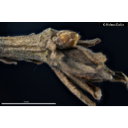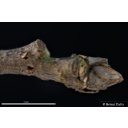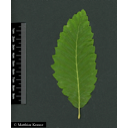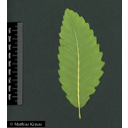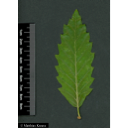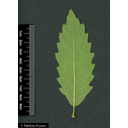Useful information about the taxon (species, subspecies, variety...)
Quercus castaneifolia C. A. Mey. 1831
Fagaceae
(APG IV)chestnut-leaved oak
Taxon concept: The Plant List (2014), version 1.1
Distribution: Caucasus, Iran
Size: 10 - 25 (m)
Quercus castaneifolia C. A. Mey. - Accepted: Quercus castaneifolia C. A. Mey. bei The Plant List (2014), version 1.1; Familie: Fagaceae (APG III)
- Flower ecology
- wind-pollinated (anemophilous)
- Life form
- tree
- Leaves
- 7-20 cm in length, lobes with small spiny apex
- Fruits
- 2-4.5 cm long acorn with cupule; cupule with prominent scales
- Natural occurrence (habitat)
- mixed oak forests, beech forests, mountain slopes
- Vegetation typ and synecology (plant community)
- temperate mixed broad-leaved forests (Hyrcanian forests); in associations with Fagus orientalis or Platycladus orientalis
- Usage
- as ornamental tree
- Altidudinal lower limit (sea level in m)
- 0
- Altitudinal higher limit (sea level in m)
- 2,400
The International Plant Names Index (2009). Published on the Internet http://www.ipni.org; Courtesy to IPNI, 2009. Exported from IPNI at date: 2009-09-22 20:17:51;
Diese Webseite verwendet Google Maps, um Karten und Standorte von Pflanzen in den Hohenheimer Gärten anzuzeigen. Dadurch werden unter Umständen Daten an Google weitergeleitet, was mit einer Verarbeitung Ihrer personenbezogenen Daten verbunden sein kann. Die Datenschutzerklärung von Google finden Sie hier: Datenschutzerklärung von Google
| Sex | Standort | Accession number | Planting year | Donation | IPEN | Lat. | Long. |
|---|---|---|---|---|---|---|---|
| Parzelle A | EG-A-021-18788 | 1981 | XX-0-HOH-EG-A-021-18788 | 48,7106410907 | 9,2061250229 | ||
| Parzelle N | SP-NB-100-10281 | 2001 | XX-0-HOH-SP-NB-100-10281 | 48,7117869806 | 9,2166082014 |

